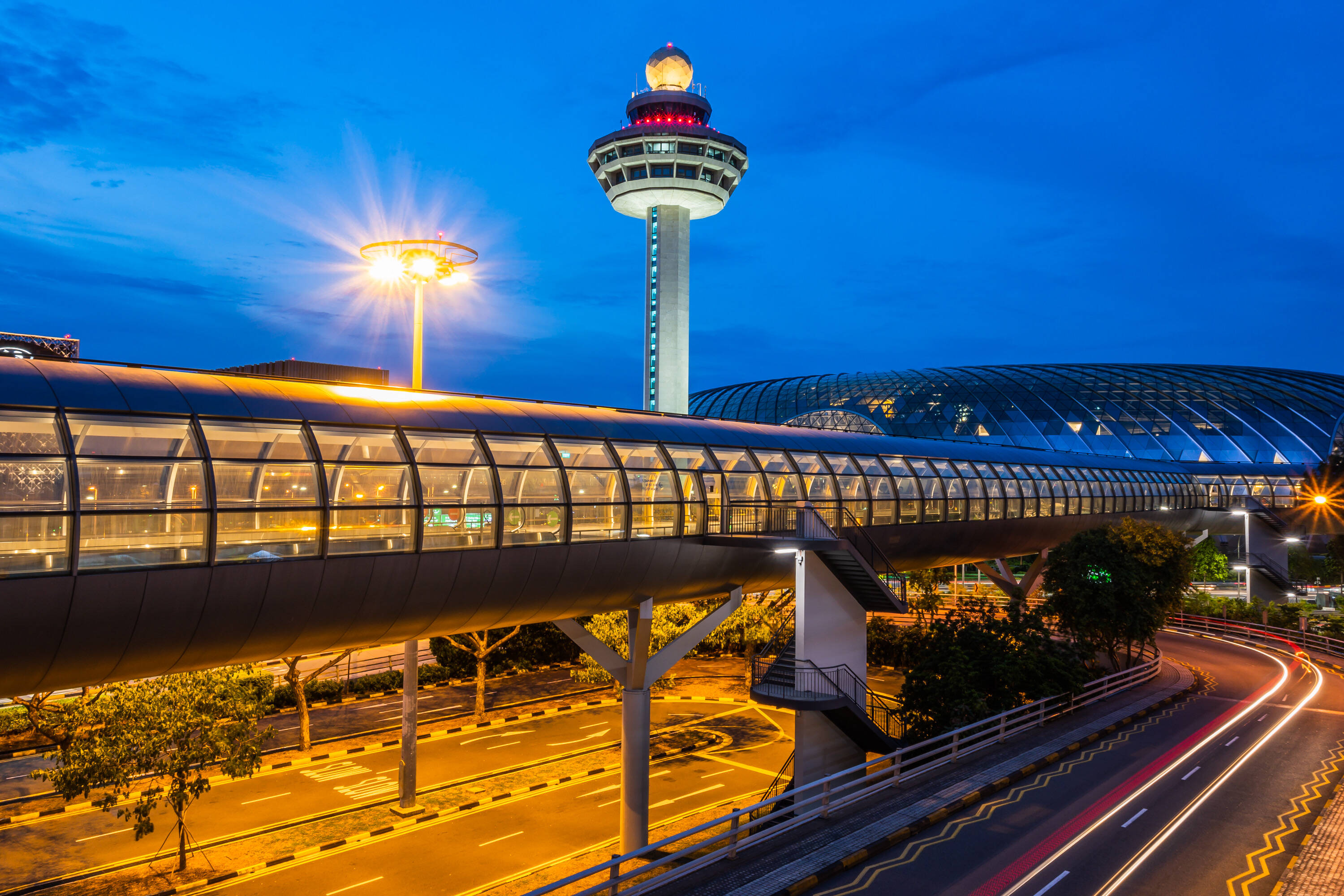Luis Felipe de Oliveira, Director General, Airports Council International (ACI) World tells Graham Newton that airports and air navigation service providers must enhance collaboration to meet future demand.

Airspace Article


What are the major challenges for airports going forward?
The airport level of debt is a huge challenge. Airports took on large amounts of debt during the pandemic to keep facilities operating. Our costs are largely fixed and a reduction in traffic means reduced revenue and economies of scale. Effectively, operating an airport became a lot more expensive.
We will also need to deal with staff shortages, which will be a significant problem as traffic resumes its normal growth curve. Any job at the airport requires training and so recruiting staff takes time and money. And then there are the macroeconomic issues, such as inflation, high-interest rates, energy costs, and supply chain disruptions.
Remember, 60% of industry jobs happen inside an airport. There are 30-plus entities within our borders. Beyond those borders, we must work with customs, immigration, and agricultural departments, to name a few. There is a lot that could go wrong, it is a complex ecosystem. But that also means there are many opportunities to get things right and improve. When everything is aligned, we have an efficient ecosystem that reduces cost, carbon emissions, and passenger disruption.
What will the MoU deliver?
What we always want to do is make aviation safer. But this MoU will see closer levels of collaboration between both parties in the context of promoting the safe, efficient, and sustainable development of civil aviation.
One of the core areas of cooperation to come from the MoU is an Airport System Capacity Enhancement (ASCE) programme aimed at unlocking airport capacity and supporting the sustainable growth of air travel demand.
The ASCE programme provides a comprehensive onsite review led by industry peers to optimize the use of airport system capacity, both in the air and on the ground. This will help to reduce delays and in particular, enable us to use a limited airport footprint on the ground more efficiently.
There will be tailor-made solutions for each airport in the programme. Can the airport taxiway and apron layout be improved or the approach capacity be developed, for example? And because the solutions bring greater efficiency, they will also reduce cost and carbon emissions.
Our efforts will also mitigate certain investments because airports will be making better use of existing infrastructure and systems. And that money might be available for other improvement projects, so it creates a positive path forward.
In addition, this MoU looks to bring airports and ANSPs closer together in training. The industry must attract the right people and talent is a key resource.
So, the MoU delivers a multitude of opportunities in capacity building, efficiency and training to both parties. A pilot is planned to take place at Jorge Chávez International Airport, in Lima, Peru with another one intended in the coming months. This will test the programme and discover what developments are available and how we might scale up.
Where are the main opportunities for airlines and ANSPs to improve their cooperation?
Airports and ANSPs interface in the air and on the ground. What each one does affects how the other performs. We realise that there are many issues in common and we need to cooperate to find solutions.
The Memorandum of Understanding (MoU) we signed with CANSO is a demonstration of that commitment from both parties.
How important is it for all aviation partners to work together to make air travel efficient?
It is crucial. Otherwise, you will get a domino effect in all the issues that affect aviation and the industry will simply not be able to meet demand. Our estimate is that passenger traffic worldwide will reach 19.3 billion in 2041.The only possible way to accommodate those numbers is having all aviation partners working together. At an airport, capacity is dependent on air navigation service provider (ANSP) capacity, ground handling capacity, airline schedules and much more. The only way to manage airports is to be connected with all aviation partners.
Not only that, but we also have to do it in a sustainable manner. The industry is committed to net zero carbon emissions by 2050, which aligns with the Paris Agreement to restrict global warming to 1.5C. This commitment is the right thing to do for the needs of society and no one entity alone can make it work. Airports, airlines and ANSPs each need to play their part.
In addition, we must work together to improve the passenger experience. That is crucial to the future of the industry. Airports can’t exist without airlines and ANSPs and our partners can’t exist without us. But the fact is that there is no industry at all unless we are properly serving the end customer and putting them first. Everything we do should support the passenger journey to make it as seamless, safe and environmentally friendly as possible.

Luis Felipe de Oliveira
Director General,
Airports Council International (ACI)

Luis Felipe de Oliveira, Director General, Airports Council International (ACI) World tells Graham Newton that airports and air navigation service providers must enhance collaboration to meet future demand.

Read full article


What are the major challenges for airports going forward?
The airport level of debt is a huge challenge. Airports took on large amounts of debt during the pandemic to keep facilities operating. Our costs are largely fixed and a reduction in traffic means reduced revenue and economies of scale. Effectively, operating an airport became a lot more expensive.
We will also need to deal with staff shortages, which will be a significant problem as traffic resumes its normal growth curve. Any job at the airport requires training and so recruiting staff takes time and money. And then there are the macroeconomic issues, such as inflation, high-interest rates, energy costs, and supply chain disruptions.
Remember, 60% of industry jobs happen inside an airport. There are 30-plus entities within our borders. Beyond those borders, we must work with customs, immigration, and agricultural departments, to name a few. There is a lot that could go wrong, it is a complex ecosystem. But that also means there are many opportunities to get things right and improve. When everything is aligned, we have an efficient ecosystem that reduces cost, carbon emissions, and passenger disruption.
What will the MoU deliver?
What we always want to do is make aviation safer. But this MoU will see closer levels of collaboration between both parties in the context of promoting the safe, efficient, and sustainable development of civil aviation.
One of the core areas of cooperation to come from the MoU is an Airport System Capacity Enhancement (ASCE) programme aimed at unlocking airport capacity and supporting the sustainable growth of air travel demand.
The ASCE programme provides a comprehensive onsite review led by industry peers to optimize the use of airport system capacity, both in the air and on the ground. This will help to reduce delays and in particular, enable us to use a limited airport footprint on the ground more efficiently.
There will be tailor-made solutions for each airport in the programme. Can the airport taxiway and apron layout be improved or the approach capacity be developed, for example? And because the solutions bring greater efficiency, they will also reduce cost and carbon emissions.
Our efforts will also mitigate certain investments because airports will be making better use of existing infrastructure and systems. And that money might be available for other improvement projects, so it creates a positive path forward.
In addition, this MoU looks to bring airports and ANSPs closer together in training. The industry must attract the right people and talent is a key resource.
So, the MoU delivers a multitude of opportunities in capacity building, efficiency and training to both parties. A pilot is planned to take place at Jorge Chávez International Airport, in Lima, Peru with another one intended in the coming months. This will test the programme and discover what developments are available and how we might scale up.
Where are the main opportunities for airlines and ANSPs to improve their cooperation?
Airports and ANSPs interface in the air and on the ground. What each one does affects how the other performs. We realise that there are many issues in common and we need to cooperate to find solutions.
The Memorandum of Understanding (MoU) we signed with CANSO is a demonstration of that commitment from both parties.
How important is it for all aviation partners to work together to make air travel efficient?
It is crucial. Otherwise, you will get a domino effect in all the issues that affect aviation and the industry will simply not be able to meet demand. Our estimate is that passenger traffic worldwide will reach 19.3 billion in 2041.The only possible way to accommodate those numbers is having all aviation partners working together. At an airport, capacity is dependent on air navigation service provider (ANSP) capacity, ground handling capacity, airline schedules and much more. The only way to manage airports is to be connected with all aviation partners.
Not only that, but we also have to do it in a sustainable manner. The industry is committed to net zero carbon emissions by 2050, which aligns with the Paris Agreement to restrict global warming to 1.5C. This commitment is the right thing to do for the needs of society and no one entity alone can make it work. Airports, airlines and ANSPs each need to play their part.
In addition, we must work together to improve the passenger experience. That is crucial to the future of the industry. Airports can’t exist without airlines and ANSPs and our partners can’t exist without us. But the fact is that there is no industry at all unless we are properly serving the end customer and putting them first. Everything we do should support the passenger journey to make it as seamless, safe and environmentally friendly as possible.

Airspace Article

Luis Felipe de Oliveira
Director General,
Airports Council International (ACI)